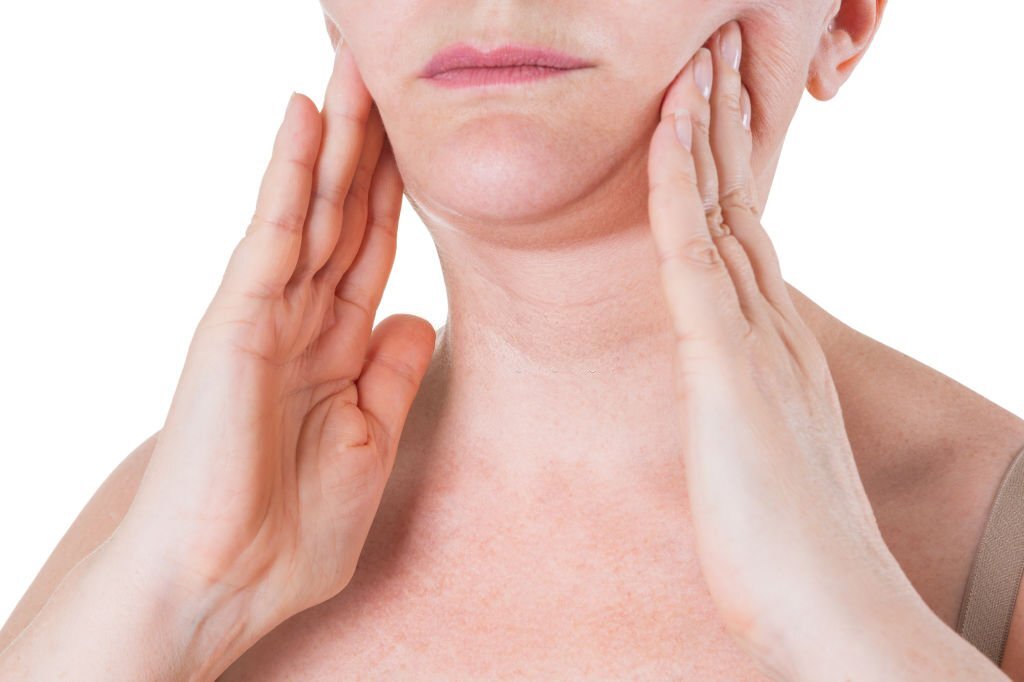Are you tired of ineffective exercises and treatments for achieving a defined jawline and improved facial aesthetics? Look no further, because the mewing exercise might just be the solution you’ve been searching for.
Mewing, a technique developed by Dr. John Mew, is gaining popularity as a natural and non-surgical method for enhancing facial features and improving jawline definition. By simply correcting your tongue posture, mewing aims to reshape the face and potentially provide a wide range of benefits, from strengthening facial muscles to improving breathing and posture.
In this article, we will delve deeper into the world of mewing, exploring the science behind the technique and how it can potentially help you achieve a more balanced and attractive facial appearance. We’ll discuss the correct tongue posture, debunk common myths, and provide a step-by-step guide to effectively perform the mewing exercise.
If you’re ready to take control of your facial aesthetics and achieve the jawline you’ve always desired, join us as we uncover the power of the mewing exercise.
Table of Contents
ToggleWhat is Mewing Exercise?

The mewing exercise is a technique that involves placing the tongue on the roof of the mouth to achieve proper oral posture. Dr. John Mew, a renowned orthodontist, developed this technique based on the belief that improper tongue posture during childhood can lead to improper growth and development of the face and jaw. By correcting the tongue posture, mewing aims to reshape the face and improve overall facial aesthetics.
To perform the mewing exercise, you need to place the entire surface of your tongue on the roof of your mouth, including the back of the tongue. This posture should be maintained throughout the day, even during eating and speaking. By doing so, you engage the muscles in your face and jaw, promoting proper growth and development.
The Science Behind Mewing Exercise
The science behind the mewing exercise lies in the concept of craniofacial remodeling. According to Dr. Mew, improper tongue posture can lead to improper growth of the face and jaw, resulting in various aesthetic and functional issues such as a recessed chin, a narrow palate, and a poorly defined jawline.
By placing the tongue on the roof of the mouth, mewing aims to apply gentle, constant pressure to the maxilla (upper jaw) and mandible (lower jaw), encouraging them to grow forward and achieve a more balanced and attractive facial appearance. This pressure stimulates bone remodeling, potentially leading to a more defined jawline, improved facial symmetry, and better overall facial aesthetics.
Benefits of Mewing Exercise

The mewing exercise offers a variety of benefits beyond just improving facial aesthetics. Here are some potential advantages of incorporating mewing into your daily routine:
- Strengthening Facial Muscles: By engaging the muscles in your face and jaw, mewing can help strengthen them, leading to a more toned and defined facial structure.
- Improved Breathing: Mewing encourages proper tongue posture, which can help open up the airways and improve breathing. This can be especially beneficial for individuals with issues such as mouth breathing or snoring.
- Better Posture: The mewing exercise promotes correct oral posture, which can have a positive impact on overall posture. By aligning the tongue, jaw, and neck, mewing can potentially help alleviate neck and back pain caused by poor posture.
- Enhanced Facial Symmetry: Mewing aims to promote balanced growth of the face and jaw, potentially leading to improved facial symmetry and a more harmonious appearance.
While individual results may vary, many individuals have reported positive changes in their facial aesthetics and overall well-being after incorporating mewing into their daily routine.
How to Do Mewing Exercise Correctly
Performing the mewing exercise correctly is crucial to maximize its potential benefits. Follow these step-by-step instructions to ensure proper tongue posture:
- Find the Correct Tongue Position: Start by placing the tip of your tongue against the back of your front teeth. Then, flatten your tongue against the roof of your mouth, making sure the entire surface of your tongue is in contact with the roof.
- Maintain Lip Seal: Keep your lips gently closed while maintaining the tongue posture. Breathing should be done through the nose, not the mouth.
- Practice Consistently: Aim to maintain the correct tongue posture throughout the day, even during eating and speaking. Consistency is key to achieving optimal results.
Remember, mewing is a long-term commitment, and results may take time to become noticeable. It’s important to be patient and consistent with your practice.
Common Mistakes to Avoid While Mewing
While mewing is a simple exercise, there are some common mistakes that people often make. Avoiding these mistakes can help ensure you get the most out of your mewing practice. Here are a few things to keep in mind:
- Incorrect Tongue Posture: Make sure to place your entire tongue on the roof of your mouth, including the back of the tongue. Failing to do so may limit the effectiveness of the exercise.
- Overexertion: Avoid applying excessive pressure when mewing. The goal is to apply gentle, constant pressure, not to strain your muscles or cause discomfort.
- Inconsistency: Consistency is key when it comes to mewing. To achieve optimal results, try to maintain the correct tongue posture throughout the day, every day.
By avoiding these common mistakes, you can ensure that your mewing practice is effective and beneficial.
Mewing Exercise Results and Success Stories
Many individuals who have incorporated mewing into their daily routine have reported positive changes in their facial aesthetics. While the results may vary from person to person, some common changes reported include:
- Improved Jawline Definition: Mewing aims to promote proper growth of the mandible, potentially leading to a more defined jawline and a stronger chin.
- Enhanced Facial Symmetry: By encouraging balanced growth of the face and jaw, mewing may help improve facial symmetry, resulting in a more harmonious appearance.
- Better Facial Proportions: Correct tongue posture can influence the growth and development of the maxilla, potentially leading to improved facial proportions and better overall facial aesthetics.
While these success stories are inspiring, it’s important to remember that individual results may vary. Patience and consistency are key when it comes to mewing.
Mewing vs Other Facial Exercises
Mewing is often compared to other facial exercises that claim to enhance facial aesthetics. While there are various exercises and techniques out there, mewing stands out for a few reasons:
- Natural Approach: Mewing focuses on correcting tongue posture, which is a natural and non-invasive method for reshaping the face. It does not involve any external devices or invasive procedures.
- Holistic Benefits: In addition to improving facial aesthetics, mewing offers potential benefits such as strengthening facial muscles, improving breathing, and enhancing posture.
- Scientific Basis: Mewing is backed by the concept of craniofacial remodeling, which suggests that proper tongue posture can influence the growth and development of the face and jaw.
While other facial exercises may have their merits, mewing offers a unique and holistic approach to enhancing facial aesthetics naturally.
Tips for Incorporating Mewing into Your Daily Routine
Incorporating mewing into your daily routine can help you maximize its potential benefits. Here are a few tips to help you make mewing a habit:
- Be Mindful: Pay attention to your tongue posture throughout the day. Remind yourself to maintain the correct tongue position and be aware of any deviations.
- Set Reminders: Use reminders, such as phone alarms or sticky notes, to prompt you to check your tongue posture periodically.
- Practice Patience: Results from mewing may take time to become noticeable. Be patient and consistent with your practice, and trust the process.
By making mewing a part of your daily routine, you can increase the likelihood of achieving your desired facial aesthetics.
Explore our blog now to discover the top 10 exercises for a comprehensive full-body workout. Elevate your fitness routine and achieve your health goals with these effective exercises.
Frequently Asked Questions
Is mewing suitable for everyone?
Mewing is generally suitable for individuals of all ages. However, it’s always recommended to consult with a healthcare professional or orthodontist before starting any new exercise or technique.
How long does it take to see results from mewing?
Results from mewing can vary from person to person. Some individuals may start noticing changes within a few months, while others may take longer. Consistency and patience are key.
Can mewing fix facial asymmetry?
Mewing aims to promote balanced growth of the face and jaw, which may help improve facial symmetry. However, the extent of improvement may vary depending on individual factors.
Can mewing replace orthodontic treatment?
Mewing is not intended to replace orthodontic treatment. It’s always best to consult with a qualified orthodontist for any specific dental or orthodontic concerns.
Conclusion
The mewing exercise offers a natural and non-surgical approach to enhancing facial aesthetics and achieving a more defined jawline. By correcting tongue posture and promoting proper growth and development of the face and jaw, mewing aims to provide a wide range of benefits, from improved facial symmetry to better breathing and posture.
Incorporating mewing into your daily routine requires consistency and patience. While individual results may vary, many individuals have reported positive changes in their facial aesthetics after practicing mewing consistently.
If you’re looking to take control of your facial aesthetics and achieve the jawline you’ve always desired, give the mewing exercise a try. Remember to consult with a healthcare professional or orthodontist for personalized advice and guidance.
Start mewing today and unlock the potential of your facial aesthetics naturally!


